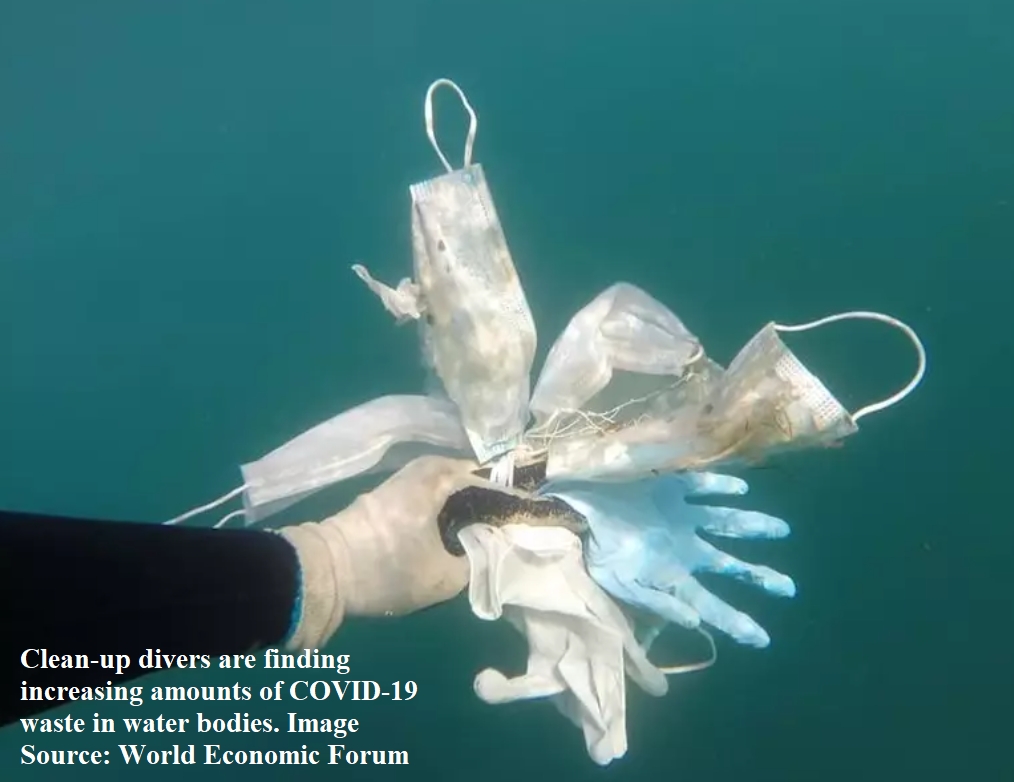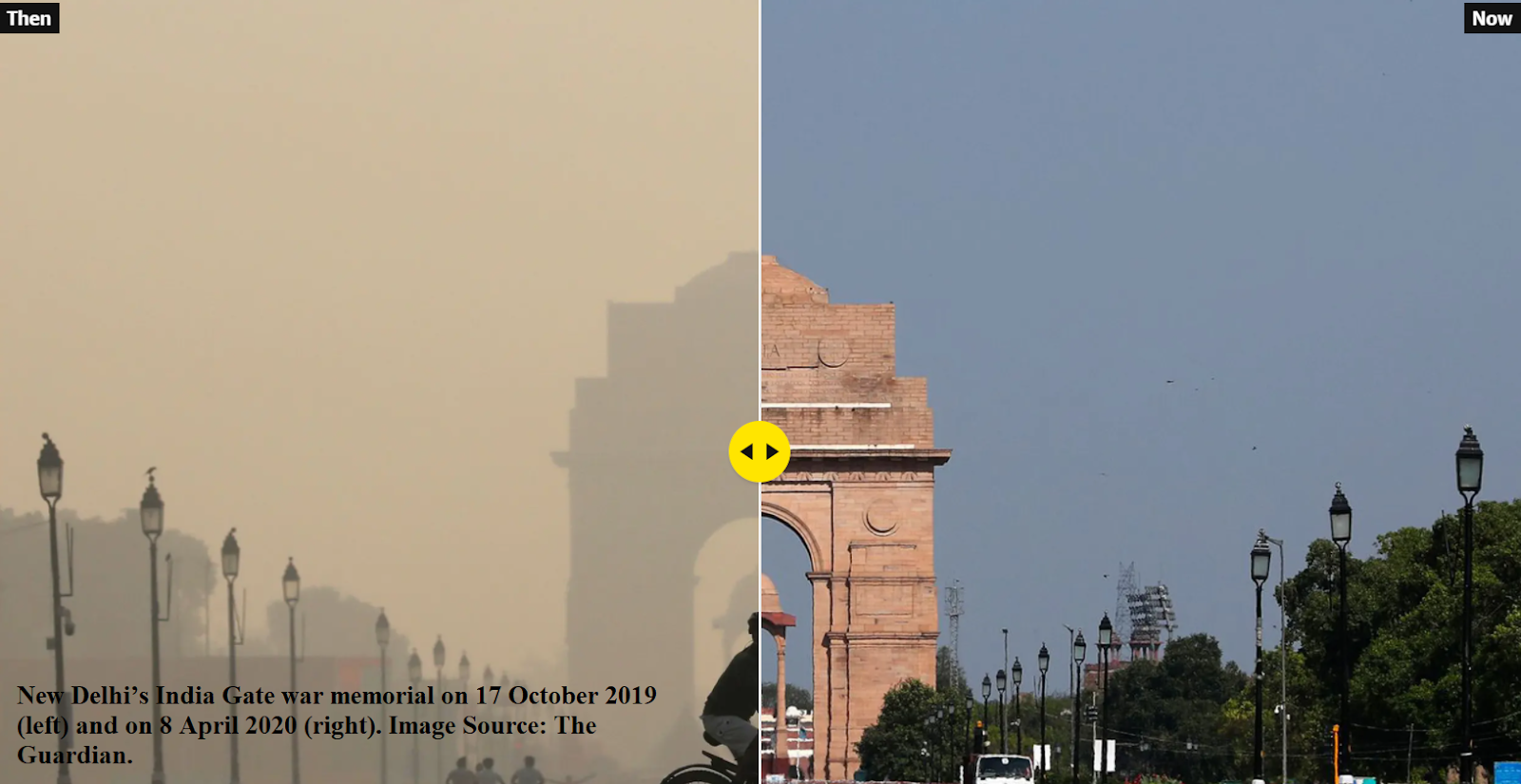COVID-19’s Impact on Environment: Heroic or Villainous?
Perspective
Apeksha Srivastava

The coronavirus pandemic has turned our lives upside-down. Life as we knew it, changed considerably since the onset of the lockdowns and mobility restrictions. Have you wondered whether its effects on our environment could be positive or negative?
Tweet
In the 21st century, pollution soars high on the list of myriad concerns threatening life on earth. Incessant contamination of the environment from man-made sources, damaging the quality of air, water and land, has led to 9,000,000 premature deaths globally in 2015. With the onset of COVID-19, lockdowns ensued, imposing certain restrictions on human activities in general. The question arises: whether these “steps” can help or hinder the global environment “clean-up?”
Human activities are the primary source of pollutants such as industrial waste, vehicular smoke, pesticides, loud noise, and trash from homes and hospitals. But, many pandemic prevention measures have affected the scope of these interactions and activities. To probe this aspect, researchers from Ecuador and Mexico conducted a study in 2020. Reported in Science of the Total Environment, it highlighted the considerable decrease of atmospheric pollutant levels in China after COVID mitigation measures were put in place. Nitrogen dioxide (NO₂) levels decreased by 40%, and particulate matter (PM) levels by 20-30%. NO₂ is a gaseous air pollutant found in chimney smoke of factories and vehicular exhausts. PM, found in the same sources, is a mixture of suspended particles and liquid droplets.
Satellite images showed that the concentrations of these pollutants also decreased in European cities. Several beaches worldwide looked cleaner. Restrained commercial and transportation activities caused a considerable reduction in noise pollution levels as well.
Another study conducted by Indian researchers in the same year, reported in Environmental Research, stated that NO₂ concentrations dropped by 40–50% across major cities of India since the onset of the nationwide lockdown. PM levels reduced by more than 50%. Air Quality Index (AQI), a measure indicating the extent of air pollution, improved during this time period, with New Delhi demonstrating an AQI of 94, while pre-lockdown values ranged between 300-400. The amount of oxygen dissolved in the river Ganga rose by 20-30% at Varanasi. River Yamuna also appeared cleaner after years.
 Provided by Author
Provided by Author
However, the other side of the coin tells a different story.
Some practices to limit the spread of this highly infectious disease include covering mouth and nose with masks, frequent handwashing, vaccination, social distancing, isolating suspected/confirmed cases, stay-at-home recommendations and lockdowns. The lockdown led to increased online shopping and food ordering, causing a substantial rise in domestic waste generation. Medical waste also witnessed a similar upsurge due to the sudden increased usage of personal protective gears like masks and gloves. Panic shopping has caused a surge in the circulation of single-use plastic bags. Multiple waste management programmes even remained suspended globally because the centers did not want the infection to spread to their sites.
This makes COVID-19’s impact on the environment seem like a double-edged sword. The pandemic-triggered lockdowns, most definitely gave nature a short recovery time. But the hero, which seemed to have defeated the villain temporarily, itself came with other negative costs and turned out to be another potential villain. Hence, stay-at-home regulations are clearly not a permanent solution to our pollution problem.
Neeldhara Misra, a faculty member of the Computer Science and Engineering discipline at the Indian Institute of Technology Gandhinagar, remarks, “One of the possible solutions could be collaborative research on drones, autonomous vehicles, and ride-sharing services that aim to optimize supply chain economics as well as control pollution in the future. Nonetheless, it is just the beginning, and a lot still remains to be planned and accomplished.”
These studies show the need to be cognizant of the effect of human activities on the environment and the urgency for immediate modifications for achieving a persistent decline in global pollution. Countries should also prioritize proper management of waste generated due to the COVID-19 pandemic and its mitigation measures, before the problem reaches a magnitude beyond control.
References
Apeksha Srivastava completed her M.Tech in Biological Engineering from the Indian Institute of Technology Gandhinagar, Gujarat, India. She is currently an aspiring science writer and a second-year Ph.D. candidate at this institute. Her research area lies at the intersection of science communication, and psychology.
Note: This article was submitted by Apeksha Srivastava as an assignment during the workshop Scicomm for Scientists 2021, organised by Cogito137, IISER Kolkata, funded by the Department of Science and Technology, Govt. of India. The assignment was selected for publication and has undergone due editorial process. Team Cogito137 thanks Spoorthy Raman for the initial editorial review of this article.
signup with your email to get the latest articles instantly